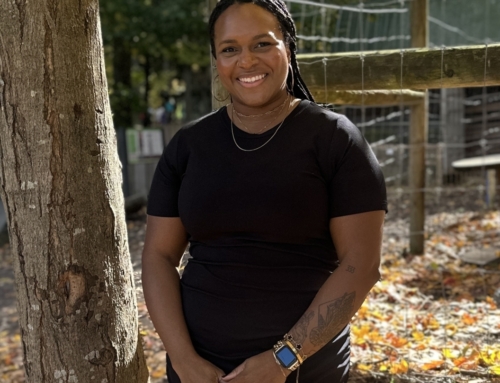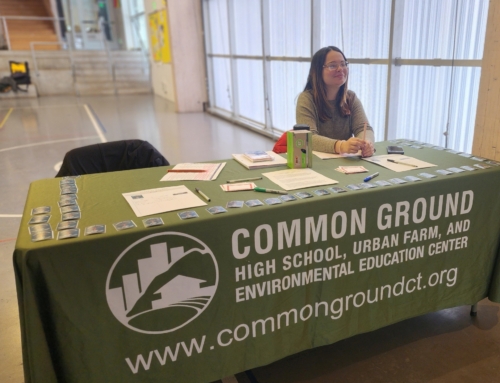By Christian Sarno, Common Ground Class of 2023
A lot of people in this world want to start their own farm to get their own fruits and vegetables, and not have to spend around 20 dollars just for a one pound watermelon. But farming comes at a very expensive price. First the average farmer has to buy many acres of land; according to the U.S. Department of Agriculture, just one acre can cost an average of $3,800 for the whole country and $14,000 dollars for the State of Connecticut. That is equal to buying a bunch of plane tickets to Japan! Farmers who don’t have that kind of money will resort to a small plot of land to farm in; they are called small farmers. A small farm that most people know in the city of New Haven is Common Ground.
Common Ground has a small farm that produces fruits and vegetables for the school and for the city. They don’t use fake fertilizers that are made from fossil fuels but they instead have their own compost area right next to the farm. They use both the meat and vegetables from the school’s compost bins, and bins from a business called Peels and Wheels that picks up from local households. They combine these food scraps with leaves and yard waste, and with another resource that they have on the farm: animal manure. Common Ground has goats, sheep, chickens, ducks and turkeys to help support the process to make their compost by the use of their manure. The farmers create a form of compost that is spread around the farm.
This is a slow process so the farmers don’t work alone. Some students such as myself go down to the compost area and help make the compost for the farm. There are usually about three to five students helping with the process. Some are using shovels to pick up the dung and put it on a layer of a combination of leaves and hay. Others will open around six to seven bins full of fruits, meat and vegetables from the compost bin in the school. We combine all of the mulch, food scraps, and manure up and make the Compost but then we have to wait for the mixture to mix well then be broken down and usable. Our compost pile moves faster because we blow air through it with a motor that’s a lot like what you’d use for a bouncy house — and compost needs oxygen! After we put a cover on top of the compost so when it rains it won’t get soggy and mess up the process. Then me and another student will take the bins and power wash them down thoroughly, then we will send those bins back to Peels and Wheels so they can collect more compost foods.
A few days after helping to start the compost, I will go back to the school on a Saturday. We will grab buckets and sometimes wheel barrels full of the finished compost, and we will head into one of the green houses and go down each line putting down the compost. Once we are done we will go up and down the lines again pulling out weeds so that the vegetables will absorb the nutrients from the compost. When we are done we take the weeds and go feed the goats since goats do love to eat everything they can get their mouths on. The goats will turn those weeds into more manure, to make more compost!

 So in conclusion Common Ground farm is a very unique farm. I say the way they make their own fertilizer, the way they provide the school the fruits and vegetables we need, is very nice in my opinion. Common Ground’s farm is a hardworking small farm that tries their hardest to provide for the school and to even help the students get community service hours.
So in conclusion Common Ground farm is a very unique farm. I say the way they make their own fertilizer, the way they provide the school the fruits and vegetables we need, is very nice in my opinion. Common Ground’s farm is a hardworking small farm that tries their hardest to provide for the school and to even help the students get community service hours.
Sources: https://www.nass.usda.gov/Publications/Todays_Reports/reports/land0822.pdf, https://www.pwcomposting.com/
Christian Sarno wrote this blog post as part of his senior project.








Leave A Comment